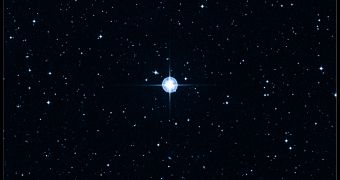NASA is revealing its findings on the oldest star we know of, so old that it precedes the universe. Obviously, no star can be older than the universe, as far as we know, but the maths suggests that this ancient star is some 14.5 billion years old.
The Big Bang happened 13.77 billion years ago. But there's a margin of error on the age of the star of plus or minus 0.8 billion years, so at the edge it marginally fits inside the timespan of the universe.
That's actually a big improvement over earlier measurements which said that the star was 16 billion years old.
In fact, that's exactly what prompted astronomers to look even closer at the star, HD 140283, and try to determine its age more accurately.
The discrepancy in the estimated age of the star and the estimated age of the universe means that there's an error somewhere, either in the way the age of universe is calculated (unlikely) or in the way the age of stars is calculated. Alternatively, it could mean the star is closer or further away than we thought.
"Maybe the cosmology is wrong, stellar physics is wrong, or the star's distance is wrong," Howard Bond, who lead the team of astronomers who studied the star, said. "So we set out to refine the distance."
Using the Hubble Space Telescope, the team was able to get a much more accurate estimate of the distance to the star, 190.1 light-years, and use that to provide a better age estimate.
HD 140283 has been studied for over a century. Scientists have known it to be quite old for over half a century when they determined that the star has a significant deficiency in heavy elements.
This is because at the time the star was formed, there were no heavy elements in the universe, these came later as stars grew and died.

 14 DAY TRIAL //
14 DAY TRIAL //